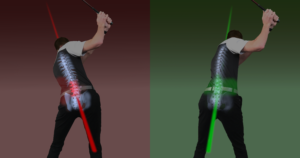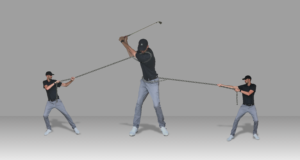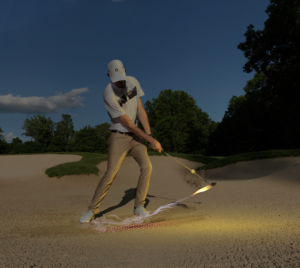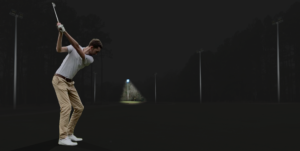Creating club head speed is an essential component of getting out of the bunkers consistently. The faster the club travels at impact, the more spin is generated on the golf ball. This in turn allows the ball to get up in the air quicker and land softly on the green, giving us more control.
Releasing the club
A concept many player struggle to understand is how to release the club, especially when executing a bunker shot.
Ideally we want to create a release that utilizes the bounce of the club but avoids a ‘flip/scoop’ motion with the wrists at impact.
Read more on how to utilize the bounce at set up here
There is a fine line between a good release and a scooping motion, especially with the small margin for error in the bunkers.
Correct Release of the club
A correct release of the club head creates efficient speed through impact. This in turn allows us to spin the cover of the golf ball. This is key! When creating spin on the ball we want to spin the cover. Not the core.
Releasing the club correctly returns the shaft back to a neutral position at impact, which will help utilize the bounce of the club.
When executed properly you will hear a solid ‘thud’ when the club interacts with the sand. This is a sound you will often hear when the best bunker players strike the ball.
Strike the match
So what thought can we have to produce a good release of the club with out flicking or scooping the ball?
An image I like to have players feel is that of striking a matchstick.
This is a great image as it illustrates how the club ‘zips’ underneath the ball, and the angle of attack at which the club should enter the sand.
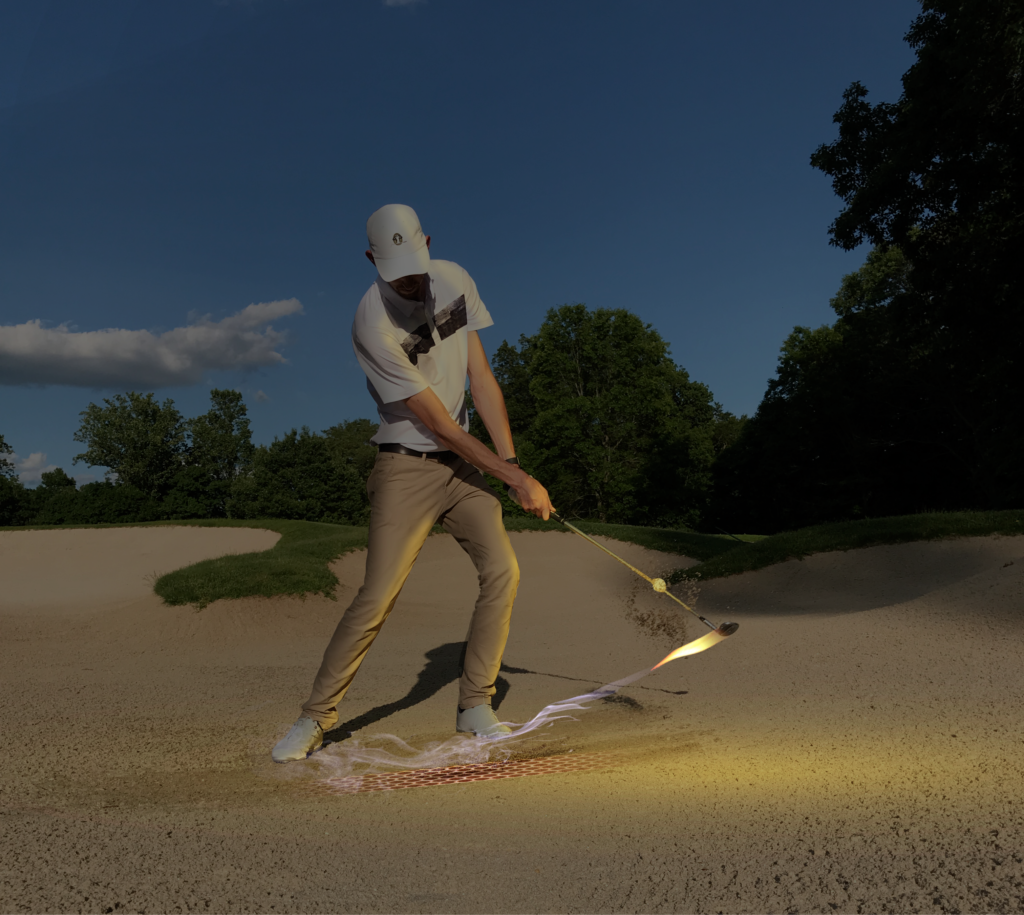
For instance when striking a match we try and keep the match on the friction surface for as long as possible, with a constant, light pressure.
Translated to a golf swing, this should help create a wide swing arc at impact. You don’t want to drive the club steeply into the sand. Just like you wouldn’t drive a matchstick into a surface at a perpendicular angle.
With the club traveling at a shallower angle of attack we want to feel the club release past our hands at impact. This release adds significant speed through the ball, resulting in greater spin on the ball.
If you’re struggling to spin the ball or simply get out of the bunker simply strike that match next time you find yourself in the sand.

